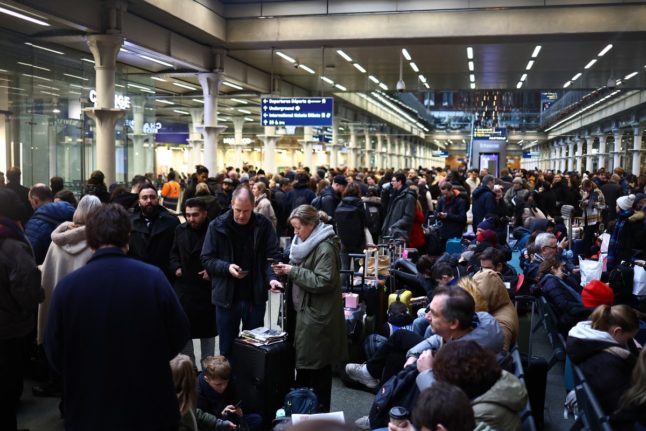HS1, the owner of the station and operator of the high-speed line between London and the Channel tunnel, is the latest body to raise concerns over the impact on travel of the EU’s new Entry/Exit System (EES) checks that are set to come into force in October 2024.
The new system which requires citizens from outside the EU or Schengen area to register before entering the zone would lead to long delays and potential capping of services and passenger numbers, HS1 warned.
The company said it needed nearly 50 new EES kiosks to process passengers but the French government had only proposed 24.
In evidence to the European scrutiny select committee, HS1 wrote: “We are told that the proposed kiosks are ‘optional’ as the process can be delivered at the border, but without about 49 additional kiosks located before the current international zone [at St Pancras] there would be unacceptable passenger delays of many hours and potential capping of services.”
With just 24 kiosks, Eurostar would be unable to process all passengers, particularly at the morning peak, and this could “lead to services having to be capped in terms of passenger numbers”, HS1 warned, adding that simple space restrictions at St Pancras station would make the EES difficult to implement.
The EES will register non-EU travellers who do not require a visa (those with residency permits in EU countries do not need to register but will be affected by delays) each time they cross a border in or out of the Schengen area. It will replace the old system of manual passport-stamping.
It will mean facial scans and fingerprints will have to be taken in front of border guards at the first entry into the Schengen area.
Travel bosses have repeatedly raised the alarm about the possible delays this would cause, especially at the UK-France border, which is used by 11 million passengers each year who head to France and other countries across Europe.
Last week The Local reported warnings by officials that the new checks could lead to 14-hour queues for travellers heading to France.
Sir William Cash, Chair of the European Scrutiny Committee, said: “Queues of more than 14 hours; vehicles backed up along major roads; businesses starved of footfall: this evidence paints an alarming picture of the possible risks surrounding the Entry-Exit System’s implementation.
“Clearly, this policy could have a very serious impact, not only for tourists and travel operators but also for local businesses. I implore decision makers on both sides of the Channel to take note of this evidence.”
READ ALSO: What affect will the EES border system have on travel to France?
The Port of Dover has already been struggling with the increased checks required since Brexit and there are fears the situation could be even worse once the EES starts to operate.
Given the possible impacts, the House of Commons European Scrutiny Committee last year launched an inquiry calling for views by affected entities with deadline for replies on January 12th 2024.



 Please whitelist us to continue reading.
Please whitelist us to continue reading.
Member comments